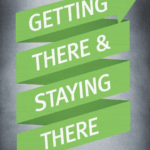 Today, unprecedented situations are coming at us at firehose speed: change is necessary but no longer sufficient to stay on your feet.
Today, unprecedented situations are coming at us at firehose speed: change is necessary but no longer sufficient to stay on your feet.
You may be familiar with the “Change” model often seen in leadership texts. But that “awareness/motivation/action” approach is insufficient for today’s dynamic organizations. This book emphasizes agility, the ability to move and change direction and position quickly and effectively without losing control. The word calls to mind the gracefulness of a quick and nimble dancer or athlete; it connotes balance, speed, coordination. But beyond its physical manifestations, agility represents the ability to think and draw conclusions quickly or acutely. When we speak of agile leaders, we mean leaders who:
- Are alert and mindful, recognizing that conditions change and noticing when they do;

- Adjust, adapting their thinking to meet the new conditions;
- Align, synching themselves, their attitudes and behaviors to the reality of their environment
- Act, making their move appropriately.
Like the best athletes, agile executives are alert and recognize what is going on, they adjust their thinking, they align themselves with the situation, then they act. With this attitude, you can explore and discover the actions and behavior that are uniquely appropriate for you to be more effective as a leader: to be a leader that produces the “right” results in the “right” way. Success goes to the agile!
From the Introduction: Getting There & Staying There
And, as a cyclist I love the example below: 